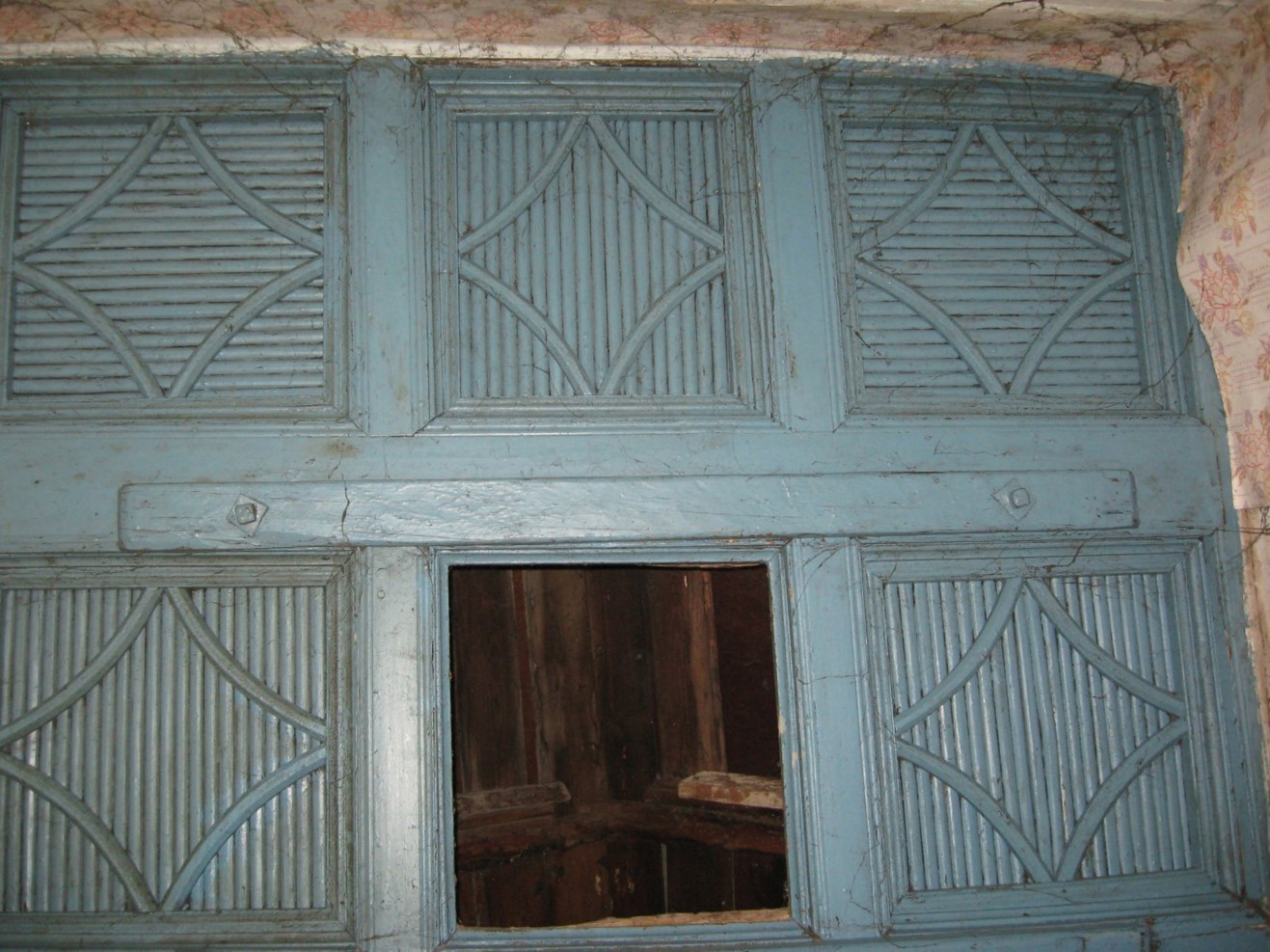This small episode of my ethnographic field life happened in July of 2008, in a small Ukrainian town of Bershad. Situated in the historic region of Podolia, one of the major destination areas of Semion An-sky’s expeditions in the early 20th c., Bershad was a town where St. Petersburg Judaica Center, of which I was then part, conducted ethnographic research in the post-Holocaust Jewish survivor communities.
On that day as I was walking along one of the town streets, and one uninhabited run-down Jewish house, one of many of such kind, somehow drew my attention. I jumped over the low fence and crawled into the house through what once was the door.
My intuition did not deceive me: this house contained probably one of the last extant removable ceilings – a distinct feature of local Jewish architecture. In this area shtetl houses were built so close to each other that there was no space for an outside sukkah. So, Jews were using their verandas for that purpose, with ceilings removed for the holiday.
The ceiling I discovered was composed of 6 squares (one already missing), attached above an outside verandah.
Needless to say, this particular architectural contraption proved to be extremely useful under the late Soviet regime: one could celebrate Sukkoth (Sikes in Ukrainian Yiddish) not being observed by the watchful eye of the local Soviet authorities – or nosy neighbors.
Therefore – since the house itself was most probably built in the early 20 th c. – one can safely say that this removable ceiling presents a concise symbol of the Jewish life that went on even in the most adverse circumstances, of the grass-root resistance to the anti-religious ethos of the state and its anti-Semitic policies, as well as of the creativity mobilized by Soviet Jews for this.
